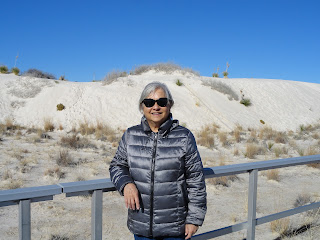Sometime in late November or early December, I
got a couple of unpaid doctor bills.
When the third one arrived, I began to believe something had gone amiss. Then I got notice that I had a new Medicare
statement, so I decided I had better look at it. When I did, the claims were all denied. The footnotes told me that Medicare was not
my primary insurer, that I needed to submit these claims to my primary insurer.
A vague memory
began to stir in my brain, a rather strange incident I had shrugged off. In late September or early October, I got a
call from the secretary of the grade school in the district where I used to
work. She asked me where she should send
my health insurance cards.
What? I haven’t been on Kansas Blue Cross/Blue
Shield for six or seven years, ever since I signed up for Medicare. “Oh,” she said. “I’ll check it out with the superintendent’s
office.”
I never gave the
incident another thought. Until I
started getting doctor bills. I called
Medicare. They had a wait list. Would I like them to call me back? I left my number. I hadn’t taken ten steps down the hallway
before my phone rang and it was Medicare on the line.
The young man
asked for my particulars to prove to himself that I was who I said I was. He looked into my account and informed me
that my primary insurer was Kansas Blue Cross/Blue Shield. “Since when?” asked I.
“Since October
22,” said he. That insurer informed
Medicare that I was on their policy since that date.
I put in a call
to the superintendent’s office in Kansas to try to begin solving my problem. It was between Christmas and New Year’s. I
doubted anyone would be in the office, but it didn’t cost anything to try.
The superintendent
himself answered the phone. Before I
could get two sentences into telling him my problem, he put me on hold. There I stayed for three or four
minutes. I hung up and tried the number
again. No answer.
I fumed and
fussed a brief while. I consoled myself
by assuring myself he wouldn’t know anything anyway. He was a former superintendent who had been
on the school board. He gave up that
position to become superintendent again, this time as interim, when the district could not find a suitable
candidate for the office.
Some things never
change. Enough said.
I called a third
time and left a message for the secretary who wouldn’t get it until into
January when school started again. She
wouldn’t know anything either, because she replaced the former secretary who
had resigned in September. I can guess
why she resigned.
I went next to
Kansas Blue Cross/Blue Shield. Amazing
enough, I only talked to two people, the first one turning me over to someone
who could help me with my problem. The
second lady said I was on the policy but I wasn’t on the policy. The school district was not paying my
premium. Obviously, neither was I. But somehow I was on the list.
She said she
would check it out further and notify Medicare that it was a mistake. I should not have Blue Cross/Blue Shield as
my primary insurer.
A few days later,
I called Medicare back, a different number this time, the one the first
Medicare guy gave me for problem resolution.
This lady grilled me for my personal information, then opened my
account. It showed that Blued Cross had
notified them of the mistake and they were taking steps to rectify it. It could take up to 45 days to happen. What do I do about my unpaid bill. “You will have to resubmit it.”
Next, I called CU Med where I had the unpaid
bill. I told the lady there what
happened. She asked me when the problem
would be resolved. “If” it will be
resolved, I amended her question. She
laughed and I told her about the 45 days.
She said okay. Should I pay the
bill? No, we will resubmit it. OK.
About the second
week in January, Secretary Emily, a former student, called me from the superintendent's office. After chatting a bit, she asked me why I
called. I told her the whole story. She didn’t know anything about it. She hadn’t handled the insurance
business. I told her not to worry about
it, that I had contacted Blue Cross and I thought we were on the way to solving
the problem. I refrained from saying
anything about her boss.
February
arrives. I get a notice from Medicare a
new statement is available. I jump
through the hoops and get access to my statement. Two claims, one paid (“yea!”), one denied
(“boo!”). One more call to
Medicare. Some serious hold time on the
phone in this case. The answer, when I
finally get it: the blood lab has to
resubmit the claim. Head slap: “I should have known.”
I don’t have a
bill for the lab work yet. I am waiting
for my March claim statement.
Mark Twain
defined an innocent bystander as someone who doesn’t have sense enough to get
out of the way. I wonder if I
qualify.















